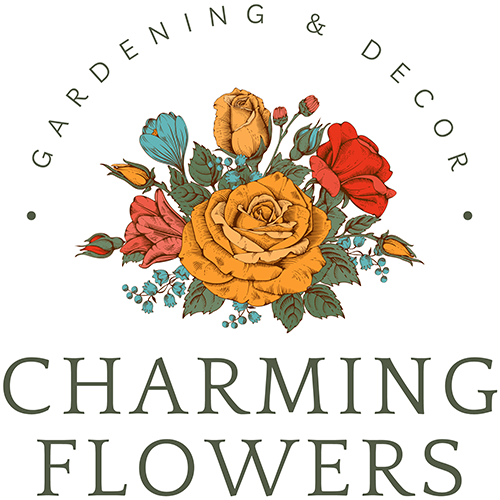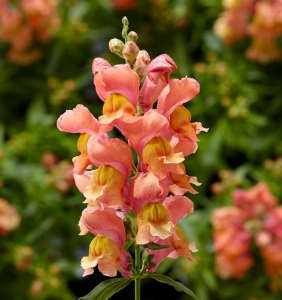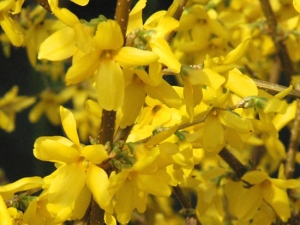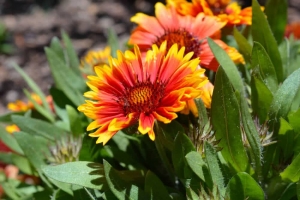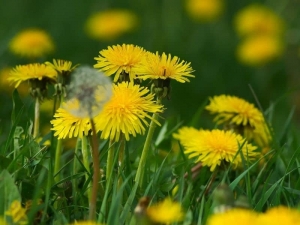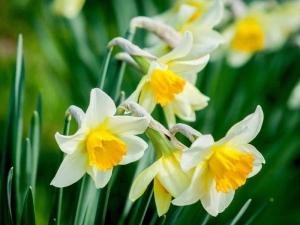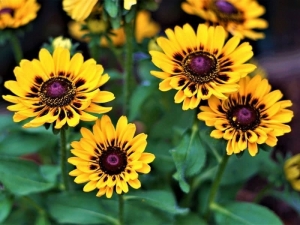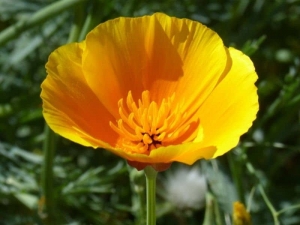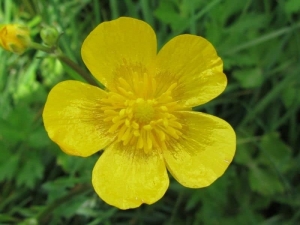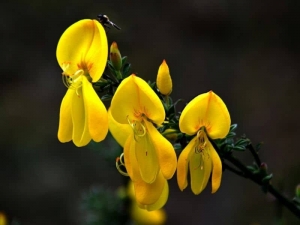Snapdragons are tall, stately stalks, the upper reaches of which are covered with small, colorful blooms. The color range among snapdragons is wide; an amazing variety of pinks, peaches, yellows, blues, purples, whites, and many combinations thereof. Planting snapdragons out can be among the first late winter gardening tasks. This fragrant specimen can handle frost, so start planting snapdragons early…
Forsythia plants are deciduous shrubs. In some species the yellow four-petaled flowers, borne along the stems, appear before the leaves in early spring. The simple narrow leaves occasionally have three parts and are borne oppositely along the pithy or hollow stems. The fruit is usually a capsule. A true sign of spring, forsythia is one of the first shrubs to bloom, providing a burst of color when…
Very long blooming period of about four months. Common varieties are a combination of yellow & brown red colour. They have purple disk flowers and yellow, orange, or white ray flowers with three or more teeth that give the plant a fringed appearance. Most have hairy leaves that are either grouped at the base of the plant or alternate along the stem.…
Dandelion is a plant with yellow flowers. Taraxacum officinale is the most common variety of this plant, and it grows in many parts of the world. Botanists consider dandelions to be herbs. People use the leaves, stem, flower, and root of the dandelion for medicinal purposes. Dandelion leaves, stems and flowers are often consumed in their natural state and can be eaten…
Daffodils and other spring bulbs die back by midsummer. A classic early flower of spring, uses for daffodils extend well beyond providing cheerful color after the winter months. These pretty spring flowers can enrich your garden, improve pollination, and provide medical and health benefits. Daffodils, also known by their botanical name narcissus, are easy and reliable spring-flowering bulbs. They multiply…
Coneflowers are popular perennials with good reason. They are heat and drought resistant, easy to grow, bloom for months, make great cut flowers, and attract birds and pollinators. The Coneflower is also known as Echinacea and is native to the United States. This plant produces a cone-shaped center that is surrounded by pink petals. These flowers bloom over a long…
California poppies are annual plants with feathery gray-green foliage. The four-petaled flowers, borne on stems 20 to 30 cm (8 to 12 inches) long, are usually pale yellow, orange, or cream in the wild, but cultivated varieties are available in whites and various shades of red and pink. California poppy is used alone or in combination with other herbs for anxiety, trouble sleeping (insomnia),…
It is not the same as ornamental marigolds of the Tagetes genus grown in vegetable gardens. Calendula is native to Asia and southern Europe and has been traditionally used in Ayurvedic and Unani systems of medicine. Calendula blossoms form a neat ray of petals that gently unfold from a tight bud, opening up to radiate from the center as the…
A childhood favorite Buttercups are one of the most common wild flowers. Their abundant bright yellow flowers are hard to miss, inhabiting meadows, fields, by the roadside, in our gardens, swamps and bogs. It has yellow, shiny petals, and grows wild in many places. It is poisonous to eat for humans and cattle, but when dry the poison is not active.…
Broom is a large, deciduous shrub, similar in appearance to gorse, but without the spines. This member of the pea family is common on heaths, in open woodlands and along hedgerows, and can also be found at the coast. Its bright yellow flowers appear in spring, from April to June, and smell of vanilla. Brooms can be deciduous or evergreen and…
- 1
- 2
